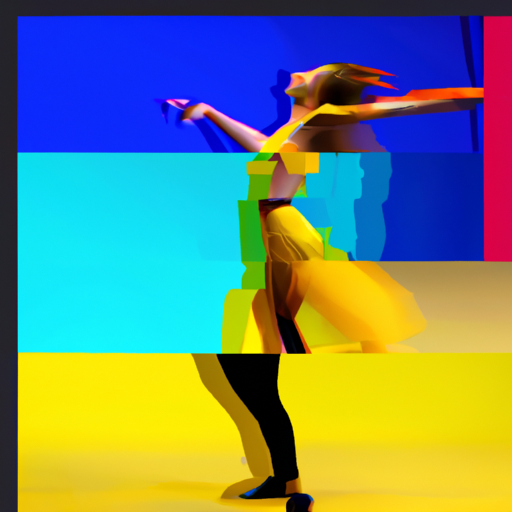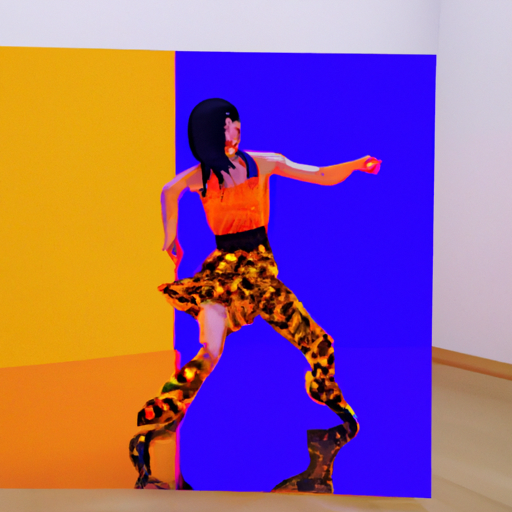
-
Table of Contents
Rhythm and Movement: Dance’s Impact on Design

Dance and design may seem like two unrelated disciplines, but they share a deep connection through the concepts of rhythm and movement. Both dance and design are forms of expression that rely on the manipulation of space, time, and energy to create a meaningful experience for the audience. In this article, we will explore how dance has influenced design and how designers can incorporate the principles of rhythm and movement into their work.
The Power of Rhythm
Rhythm is a fundamental element of both dance and design. In dance, rhythm refers to the pattern of beats and accents that give a piece its structure and flow. Similarly, in design, rhythm is the repetition or alternation of visual elements to create a sense of movement and harmony.
One example of how dance has influenced design through rhythm is the use of grids in graphic design. Grids provide a framework for organizing content and creating a sense of rhythm and order. Just like a choreographer uses a musical beat to guide the movements of dancers, designers use grids to guide the placement of elements on a page.
Another way dance has influenced design is through the use of rhythm in typography. The spacing between letters and words can create a visual rhythm that enhances the readability and impact of a design. For example, a designer may increase the spacing between letters to create a sense of movement and energy, or decrease the spacing to create a more compact and stable design.
Movement as a Design Element
Movement is another key element that dance and design have in common. In dance, movement is the physical expression of rhythm and emotion. In design, movement refers to the visual flow and direction that guides the viewer’s eye through a composition.
One way designers can incorporate movement into their work is through the use of lines. Lines can create a sense of direction and movement, leading the viewer’s eye from one element to another. For example, a curved line can create a sense of fluidity and grace, while a diagonal line can create a sense of energy and dynamism.
Another way movement can be incorporated into design is through the use of animation. Just as dancers use their bodies to create dynamic and expressive movements, designers can use animation to bring their designs to life. Animation can add a sense of movement and interactivity, engaging the viewer and creating a more immersive experience.
Case Studies: Dance-Inspired Design
There are numerous examples of how dance has inspired and influenced design. One notable case study is the collaboration between fashion designer Issey Miyake and choreographer William Forsythe. Miyake’s designs, known for their innovative use of pleats and unconventional silhouettes, were inspired by Forsythe’s choreography, which often pushed the boundaries of traditional dance movements.
Another example is the work of graphic designer Paula Scher, who has incorporated elements of dance into her typography. Scher’s typography often has a sense of rhythm and movement, with letters and words flowing and intertwining with each other. Her designs capture the energy and dynamism of dance, creating a visually engaging experience for the viewer.
The Impact of Dance on User Experience Design
The principles of rhythm and movement are not limited to visual design; they also play a crucial role in user experience (UX) design. UX designers aim to create intuitive and engaging experiences for users, and dance can provide valuable insights into how to achieve this.
One way dance can inform UX design is through the concept of flow. In dance, flow refers to the seamless and continuous movement from one step to another. Similarly, in UX design, flow refers to the smooth and uninterrupted navigation through a website or application. By studying the flow of dance movements, UX designers can create interfaces that guide users through a series of actions in a natural and intuitive way.
Another way dance can impact UX design is through the concept of rhythm. Just as dancers rely on rhythm to create a sense of structure and flow, UX designers can use rhythm to guide users through a series of interactions. For example, a UX designer may use a consistent rhythm of animations and transitions to create a sense of progression and engagement.
Conclusion
Dance and design are two disciplines that may seem unrelated at first glance, but they share a deep connection through the concepts of rhythm and movement. By incorporating the principles of dance into design, designers can create more engaging and impactful experiences for their audience. Whether it’s through the use of grids and typography in graphic design, the incorporation of movement and animation, or the application of dance principles in UX design, the influence of dance on design is undeniable. So next time you’re working on a design project, consider the power of rhythm and movement, and let dance inspire your creativity.
